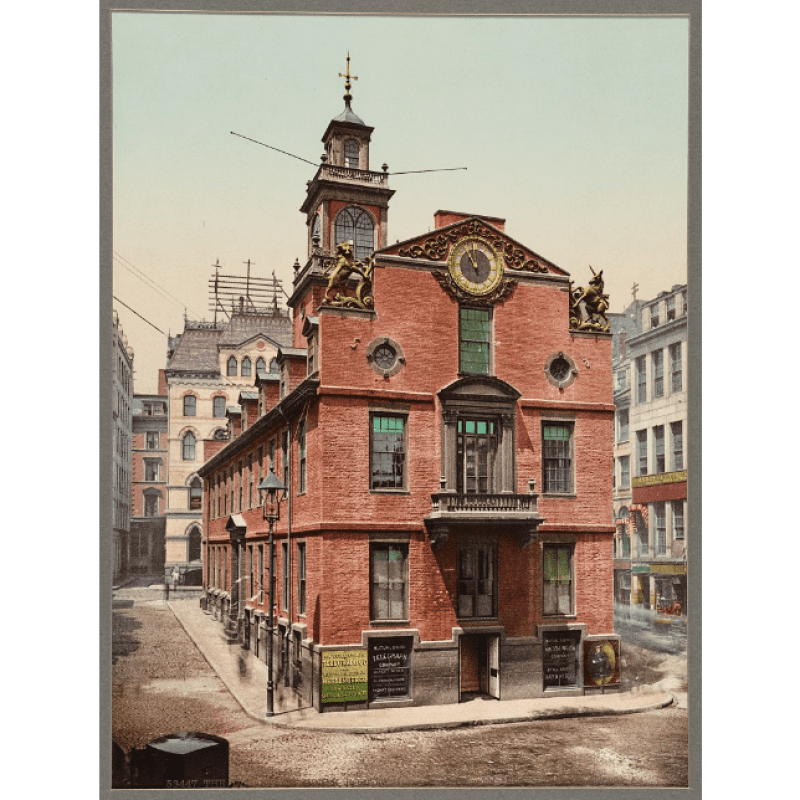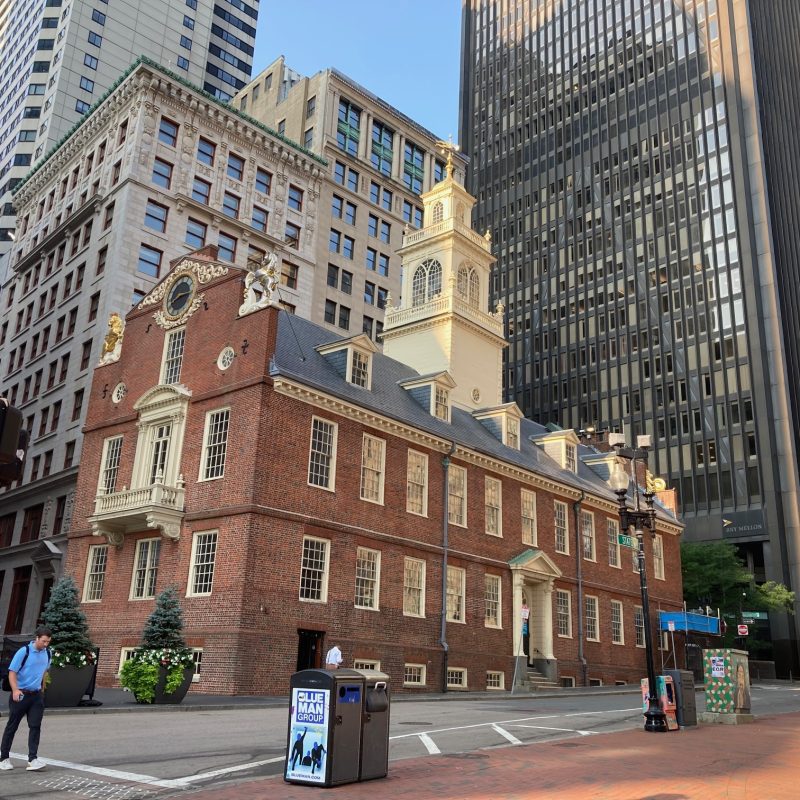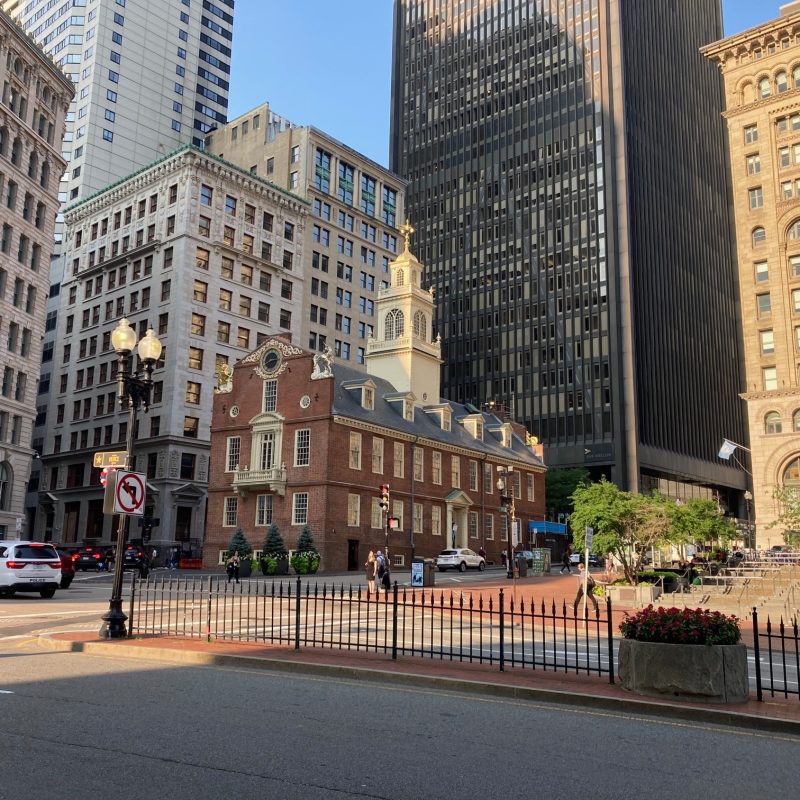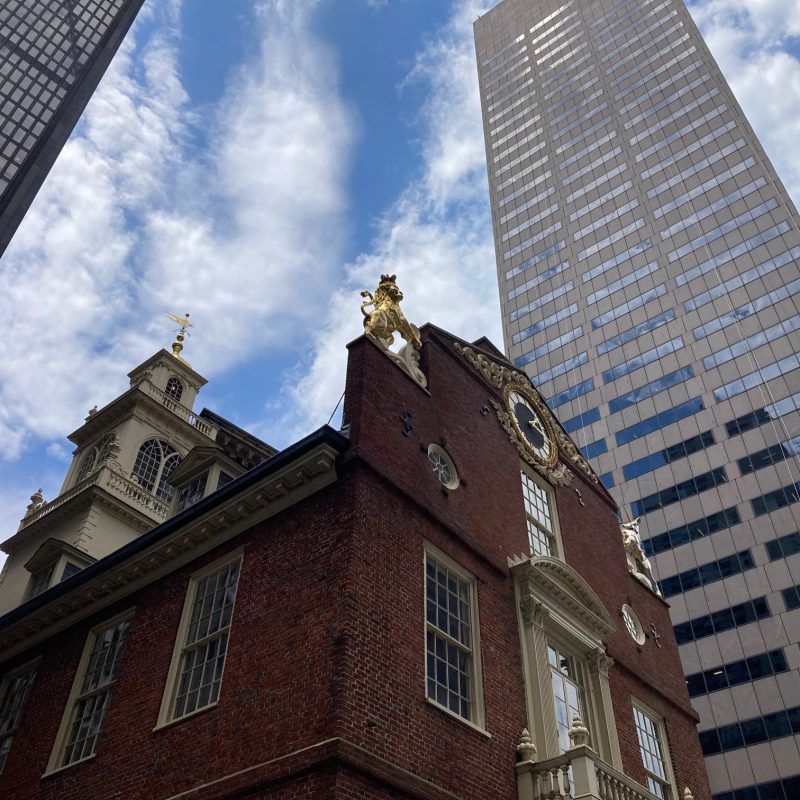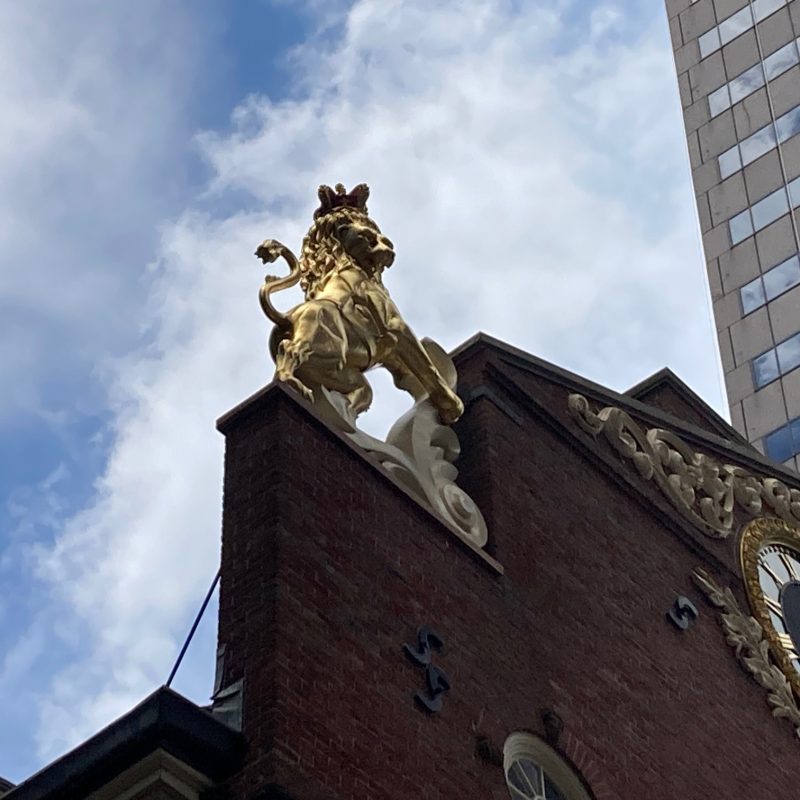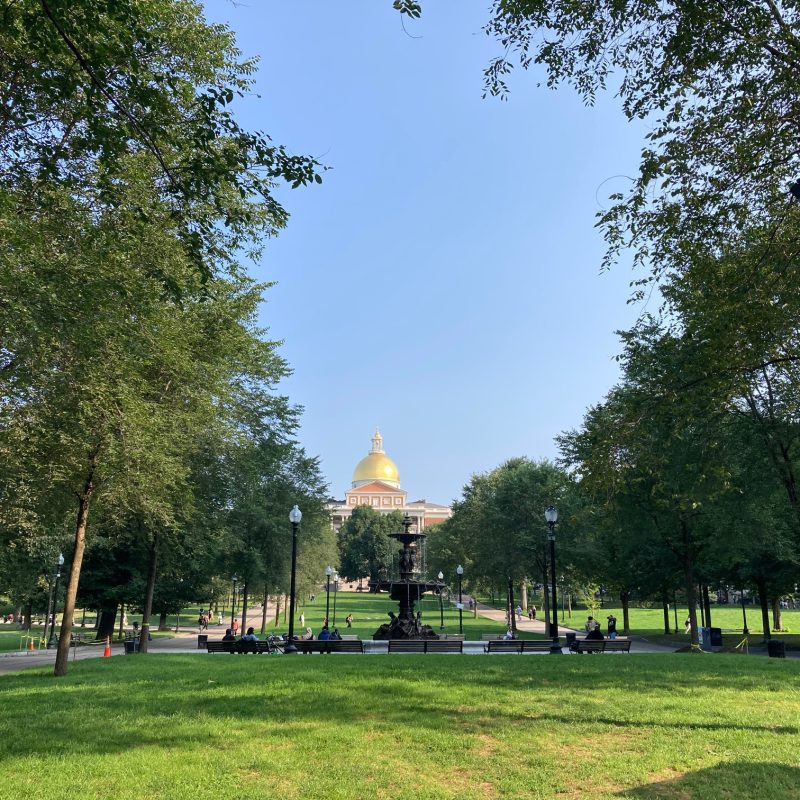The site of Boston’s wooden Town House, where the General Court met, is where the Old State House stands today.
More About Town House, Site of / Old State House
On this site, at the top of what was then King Street, originally stood Boston’s 1658 wooden Town House, so-called before the revolution. Here the General Court met to decide all matter of issues, including capital crimes. One of the many peculiarities of the Salem witch trials was the fact that the witchcraft cases, which were capital offenses, were largely heard in Salem’s Town House (and the convicted were executed in Salem), rather than in Boston. This was likely due to the sheer number of accusations centered in Essex County and the expediency of addressing them closer to home. Boston was the place where Irish widow Goody Glover was convicted in 1688, however, and during 1692-3, many government officials gathered in Boston’s Town House, and beyond, not only to carry on the business of the day but to discuss the frightening events to the north. The volume of arrests in 92-93 also saw a great number of accused witches imprisoned in Boston’s jail, just a short distance from the Town House. Pirates were also tried in this building in the seventeenth and eighteenth centuries, including Captain Kidd (imprisoned in Boston, executed in London) and Captain Quelch (hanged with five others in Boston).
It was in Boston’s Town House that the new Province of Massachusetts Bay charter, detailing England’s renegotiated rules for the governing of the colony, was discussed and dissected when it arrived in the hands of newly-appointed royal governor William Phips and Rev. Increase Mather in May of 1692. Says historian Marilynne Roach, “The magistrates received them in the candlelit Town House at the head of King Street where Phips promised that, as God had sent him to New England, he would uphold the old laws and liberties as before … Phips began to read his official commission when he noticed the sun was setting, and postponed the remainder rather than infringe on the Sabbath.”
It took some time to fully digest the charter and set the new government in place and to reestablish the law courts. For a time, some old laws were followed, as long as they did not contradict anything in the new charter. Militias, the province’s security, and taxes were discussed and approved in the Town House and it was where sheriffs, justices, and other civil officers were appointed. It was also here that Governor Phips decided to institute an emergency court to try the witchcraft cases – the Court of Oyer and Terminer, which would meet in Salem. Some of the necessary paperwork for the witch trials – warrants, officers’ returns, etc. were signed here. The first time the General Court convened at the Boston Town House under the new charter was June 8, 1692. On that day, Chief Justice and Lieutenant Governor William Stoughton signed the death warrant for Bridget Bishop. She was hanged in Salem two days later, the first to be executed. Around the same time, one of the magistrates, Nathaniel Saltonstall, resigned from the court. It is surmised that he was unhappy with the legal procedures, or lack thereof. A rather sad anecdote is told of Saltonstall toward the end of the awful events. In mid-February, 1693, as the trials were coming to an end, Saltonstall’s old friend, Judge Samuel Sewall, reported seeing Saltonstall in the Town House, drunk and slumped on a bench in the council chamber. Whether his condition had anything to do with the extreme fear and stresses of the day is unknown. But the Salem witch trials surely took a terrible toll on hundreds, if not thousands, of Massachusetts citizens in numerous ways.
The original wooden building was destroyed by fire in 1711, replaced by the brick building we see today.
The Old State House was the seat of both colonial and state governments of Massachusetts. Constructed in 1713, it is the oldest surviving public building in Boston. In the square in front of the building, in March of 1770, British soldiers fired upon colonists, killing five and wounding many more, an event that came to be known as the Boston Massacre. Six years later, in July of 1776, Bostonians gathered below the building’s balcony to hear the reading of the Declaration of Independence. This building remained the seat of Massachusetts government until 1798, when the new State House, designed by Charles Bulfinch, was built on Beacon Hill.
206 Washington Street



